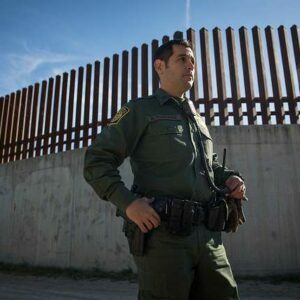The horrific murder of Laken Riley in Georgia has hit a nerve for many Americans who are already concerned about the border crisis.
Jose Ibarra, a Venezuelan national who illegally crossed the southern border in September of 2022 has been charged with murdering 22-year-old Riley while she was out on a run. Any murder is a tragedy. But the murder of a U.S. citizen by an illegal immigrant shocks the conscience because it represents an unacceptable breakdown in law and order. Simply put, this murder was preventable, if only our government enforced all our immigration laws.
During his recent State of the Union Address, President Biden painted himself as a man ready to tackle border security on day one. If only he had. Then violent individuals like Ibarra would’ve been swiftly detained and removed. But because of our broken border and overwhelmed immigration courts, Ibarra was processed, released, and allowed to roam freely. And that put a dangerous individual in Laken Riley’s path.
But the people Border Patrol apprehends aren’t even our greatest concern. Our border is so overwhelmed by migrants claiming humanitarian relief that our agents spend most of their time processing them. Border Patrol agents didn’t sign up to do asylum paperwork – they signed up to protect us.
And because they can’t, over 1.7 million southern border crossers have evaded apprehension since President Biden took office. We don’t know anything about these people except that they want to avoid detection. Are they all bad? Unlikely. Are some violent criminals? Almost certainly.
Securing our communities starts at the border. This is the message that the Americans for Prosperity Foundation has articulated repeatedly during our numerous border trips and border security events hosted with state chapters of Americans for Prosperity. While the national narrative concentrates on border states, areas further from the U.S.-Mexico border need to understand the problem too. Without proper border security every town becomes a border town, every state becomes a border state.
How do we secure the border? Tucson Sector Chief Patrol Agent John Modlin said it best in his interview for a recent Congressional report:
“[W]hat I’ve seen in my career is that we always need that combination of things. You’ve probably heard me talk quite a bit about technology, infrastructure, and personnel. And so nothing by itself works. The personnel by itself, there will never be enough of us to do this. A border wall system by itself won’t work. The technology, you have to have– somebody put hands on somebody.” (emphasis added)
Border walls are effective in urban areas where crossers can vanish in seconds. On the other hand, walls aren’t particularly helpful in a remote area, like Big Bend National Park, where it might take days to reach the nearest highway or city. There, technology like drones and sensors to detect illegal migrant activity is crucial.
Something that is often lost when we talk about the border wall is that it isn’t a stand-alone entity. It was part of a system based on Border Patrol’s requirements. It comes with high-powered lights, motion sensors, and long-range cameras. That’s what made Biden’s abrupt cancellation of Trump’s border wall so damaging. Border Patrol wasn’t merely losing a wall; they were also losing other tools to apprehend illegal crossers.
Walls and technology, while very important, have, of course, never made an apprehension. That’s why you’ll always need personnel. But it’s been difficult to hire, and even more difficult to retain good personnel. After peaking at 21,444 in FY 2011, the number of Border Patrol agents dropped to 19,536 in FY 2021. Enticing and retaining personnel is difficult because of the isolated work locations, negative public perception of Border Patrol agents, and because those with higher degrees can find more lucrative work in other occupations.
A strong border is not a panacea to all that ails this great country, but it’s necessary for a stronger and safer U.S.
Please follow DVJournal on social media: Twitter@DVJournal or Facebook.com/DelawareValleyJournal



